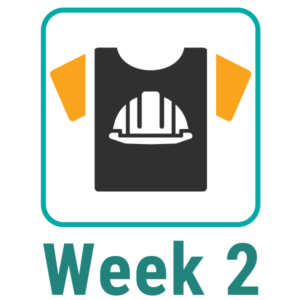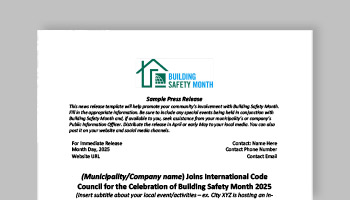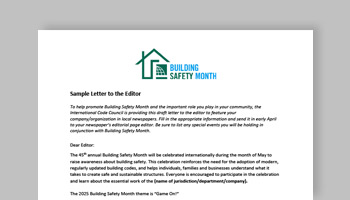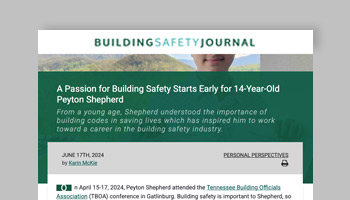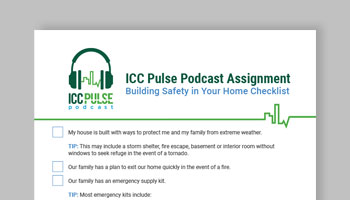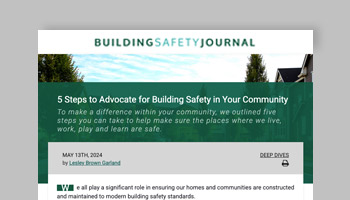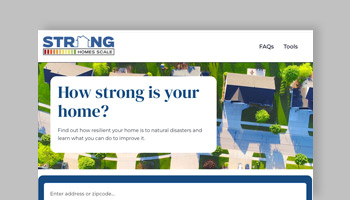
Create a game plan to actively support building safety programs in your community! Now's the time to build your team and let your voice be heard by attending city council meetings, sending press releases and more. Here we share fun and educational resources to get kids involved with Building Safety Month, too.
Join the Building Safety Month conversation all month long – tag the International Code Council on social media, and use #BuildingSafetyMonth2025 and #BuildingSafety365 to help spread the word!
Let Your Voice Be Heard

We all contribute to making sure the places where we live, work and play are safe for not only ourselves, but our family and neighbors, too. Be the change you'd like to see in your community by speaking up about building safety. From reaching out to your local media, to advocating for building safety to local leadership, even the smallest action can ultimately save lives. Here we've included education and advocacy tips, as well as a "Press Release" and "Letter to the Editor" template that is easily editable and shareable.
- Talk to your network about building safety and share fact-based information and resources on your social media accounts.
- Share news releases with your local newspapers, radio stations and television networks to encourage local media to cover stories related to building safety.
- Share building safety information or concerns with your public information officer, city manager or mayor.
- Plan community events to raise awareness or attend local events about building safety.
- Contact the code officials in your area to learn more about the building industry and discover local volunteer opportunities.
Recruiting the Next Generation

Kids learn the basics of building safety from an early age – without even knowing it! We've put together resources here and on our Kids Corner page to help parents, teachers and community leaders teach kids what building safety professionals do, and how they make our homes and communities safer for everyone. With a little help from CODiE the Cheetah, kids can work through our Building Safety Month activity book to complete their training and earn a certificate as a Junior Code Official (and submit a proclamation!).
-
- Listen to our special episode of the ICC Pulse Podcast on “Kids and Building Safety”. Print the same checklist used in the episode for an immersive and interactive building safety experience at home.
- Our Building Safety Month activity book includes fun puzzles and games that teach kids what to do to keep themselves and their families safe, aware and prepared.
- Parents, teachers and chapter leaders browse Building Safety Month-themed items that are perfect for little aspiring building safety professionals at home.
Championing Building Safety

Modern, up-to-date buildings codes are crucial in preventing disasters such as structural collapse or fires and mitigating the potential damage caused by events such as hurricanes or floods. Share the importance of adopting modern building codes and standards with public officials to help make our communities safer.
Learn more about the code status of your home and community, and how advocate for the latest version:
- Visit the Federal Alliance for Safe Homes (FLASH) Inspect to Protect website to find the model code status of your home based on available data. Here you'll also learn about the potential threats to your home based on community disaster history, and what upgrades may increase your home’s resilience.
- Visit the Code Council’s code adoption map and Codes Save to determine if your state or community has adopted up-to-date codes for new construction.
- If your state or community hasn't adopted the latest model code, find the names and contact information for the elected officials who represent you and ask for change. Include details on why adopting and enforcing modern building codes is important.
Spread the Word




